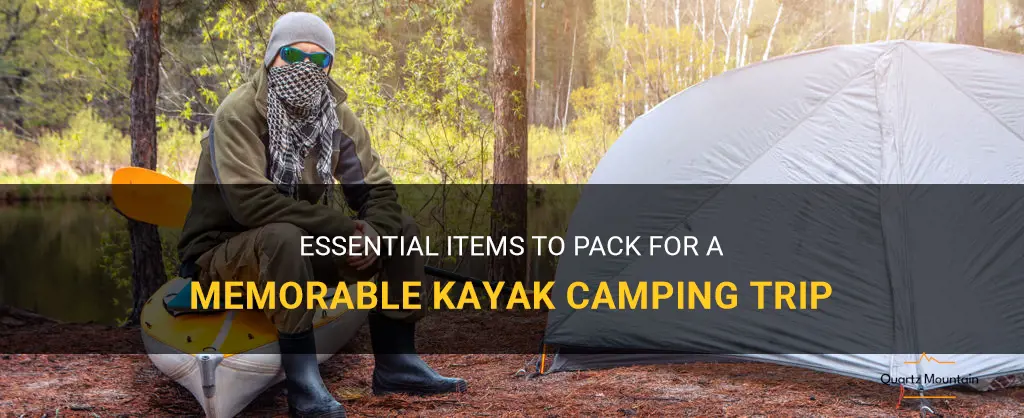
Planning a kayak camping trip can be an exhilarating experience, but it can quickly turn into a stressful one if you're not prepared with the essential items. Whether you're a seasoned kayaker or a beginner, having the right gear can make the difference between a memorable adventure and a disastrous one. From safety equipment to cozy sleeping gear, this guide will walk you through the essential items you need to pack for a truly unforgettable kayak camping trip. So, grab your paddle and let's get packing!
What You'll Learn
- What are the essential items to pack for a kayak camping trip?
- How should I pack and organize my gear for a kayak camping trip?
- Are there any specific clothing items I should bring for a kayak camping trip?
- What kind of camping equipment should I bring for a kayak camping trip?
- Are there any food and cooking essentials I should pack for a kayak camping trip?

What are the essential items to pack for a kayak camping trip?
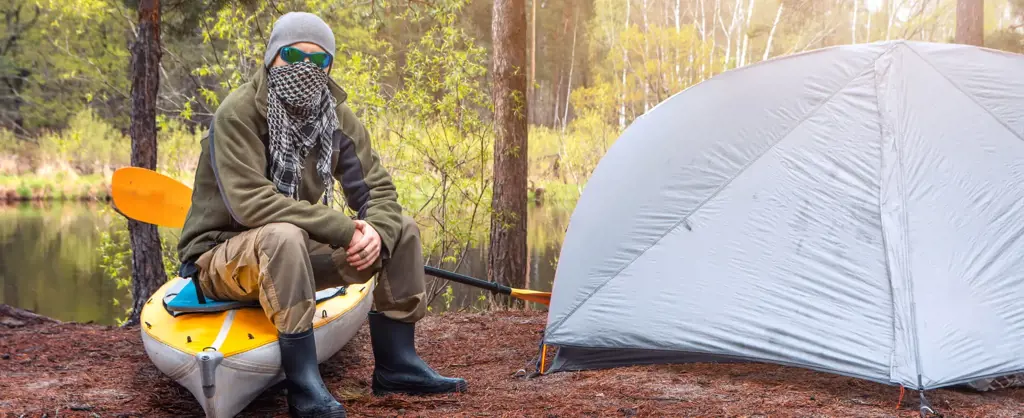
When planning a kayak camping trip, it is essential to pack the right items to ensure a safe and enjoyable experience. Whether you are embarking on a weekend getaway or a longer excursion, these essential items will help ensure your comfort, safety, and convenience while out on the water and at your campsite. Here are some of the must-have items to pack for a kayak camping trip.
Kayaking Gear:
First and foremost, you will need your kayak and all the necessary paddling equipment. This includes a paddle, life jacket, and a spray skirt to keep water out of your kayak. It is important to have a kayak that is suitable for camping trips, with enough storage space for all your gear.
Camping Gear:
You will also need all the essential camping gear, including a tent, sleeping bag, sleeping pad, and camping stove. Choose a lightweight and compact tent that is easy to set up and provides enough space for you and your camping mates.
Clothing and Personal Items:
Pack appropriate clothing for the weather conditions you expect to encounter during your trip. This may include quick-drying and moisture-wicking clothes, as well as a waterproof jacket and pants. Don't forget to bring a hat, sunglasses, and sunscreen to protect yourself from the sun. You will also need personal items such as toiletries, medications, and a first aid kit.
Food and Water:
Plan your meals ahead and pack enough food for the duration of your trip. Opt for lightweight and non-perishable items that are easy to pack and prepare. Bring plenty of water or invest in a portable water filter to ensure a safe drinking supply.
Navigation Tools:
A reliable navigation system is crucial for any kayak camping trip. Bring a detailed map or a GPS unit to help you navigate your route. It is also a good idea to pack a compass and a whistle for emergency situations.
Safety Equipment:
Ensure your safety by packing essential safety equipment. This should include a waterproof flashlight or headlamp, a whistle, a waterproof phone case or radio, a knife or multi-tool, and a signaling device such as flares or a mirror.
Repair Kit:
Be prepared for any unexpected mishaps by bringing a kayak repair kit. This should include a patch kit, duct tape, and extra bungee cords or straps. A collapsible paddle float can also be handy if you need to stabilize your kayak in case of a capsize.
Extra Gear:
Consider the specific needs of your trip and pack any additional gear accordingly. This might include fishing gear if you plan to fish during your trip, a camping chair for additional comfort at your campsite, or a dry bag to keep your valuables safe and dry.
By packing these essential items, you will be well-prepared for a kayak camping trip. Before you head out, make sure to check the weather forecast and let someone know about your plans and expected return time. Remember to prioritize safety and enjoy the beauty of nature while exploring new waters on your kayak camping adventure.
The Essential Items to Pack for Your Camino Walk
You may want to see also

How should I pack and organize my gear for a kayak camping trip?
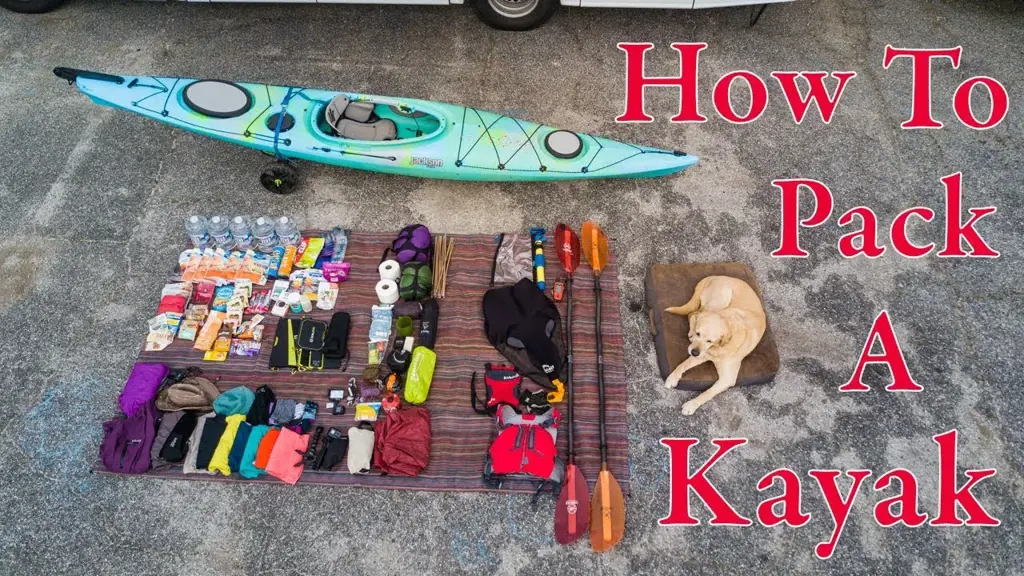
Kayak camping is a wonderful adventure that allows you to explore remote locations and experience the beauty of nature. However, packing and organizing gear for a kayak camping trip can be a daunting task, especially if you are new to the experience. In this article, we will discuss some tips and tricks to help you pack and organize your gear efficiently for a kayak camping trip.
- Make a checklist: Before you start packing, make a checklist of all the essential items you will need on your kayak camping trip. This will ensure that you do not forget anything important and will help you stay organized throughout the packing process.
- Pack strategically: When packing your gear, it's important to pack strategically to make the most of the limited space in your kayak. Start by packing heavy items first, such as your tent, sleeping bag, and cooking equipment, at the bottom of your kayak. This will keep the center of gravity low, making your kayak more stable. Then, pack lighter items on top, such as clothing and personal items.
- Utilize dry bags: To protect your gear from water and ensure its safety, use dry bags for packing. Dry bags are waterproof and will keep your belongings dry even if your kayak capsizes or gets wet. Pack your clothing and personal items in smaller dry bags to keep them organized and easily accessible.
- Use compression sacks: Compression sacks are a great way to save space in your kayak. These sacks allow you to compress your sleeping bag, clothing, and other bulky items, reducing their size and making them easier to pack. This will leave you with more room for other essential gear.
- Pack food strategically: When it comes to packing food for a kayak camping trip, it's important to pack strategically to ensure you have enough for your entire trip. Opt for lightweight and non-perishable food items that are easy to pack and cook. Divide your food into individual meal portions and pack them in separate waterproof containers or ziplock bags to keep them organized and prevent any spoilage.
- Organize your gear in compartments: To make it easier to locate your gear during your kayak camping trip, organize your gear in compartments. Use mesh bags or small containers to separate and store items such as cooking utensils, toiletries, and tools. This will help you stay organized and save time when you need to find something quickly.
- Distribute weight evenly: When loading your kayak, distribute the weight evenly on both sides to maintain stability and make paddling easier. Avoid overloading one side of your kayak, as this can cause it to tip over.
- Test your gear before the trip: Before embarking on your kayak camping trip, it's essential to test all your gear to ensure it's working properly. Set up your tent, check your cooking equipment, and make sure everything is in good working order. This will help you avoid any unexpected surprises during your trip.
In conclusion, packing and organizing your gear for a kayak camping trip requires careful planning and attention to detail. By following the tips and tricks mentioned in this article, you can ensure that your gear is packed efficiently and organized properly, allowing you to have a memorable and enjoyable kayak camping experience.
Creating a Perfect Travel Toiletry Bag Packing List
You may want to see also

Are there any specific clothing items I should bring for a kayak camping trip?
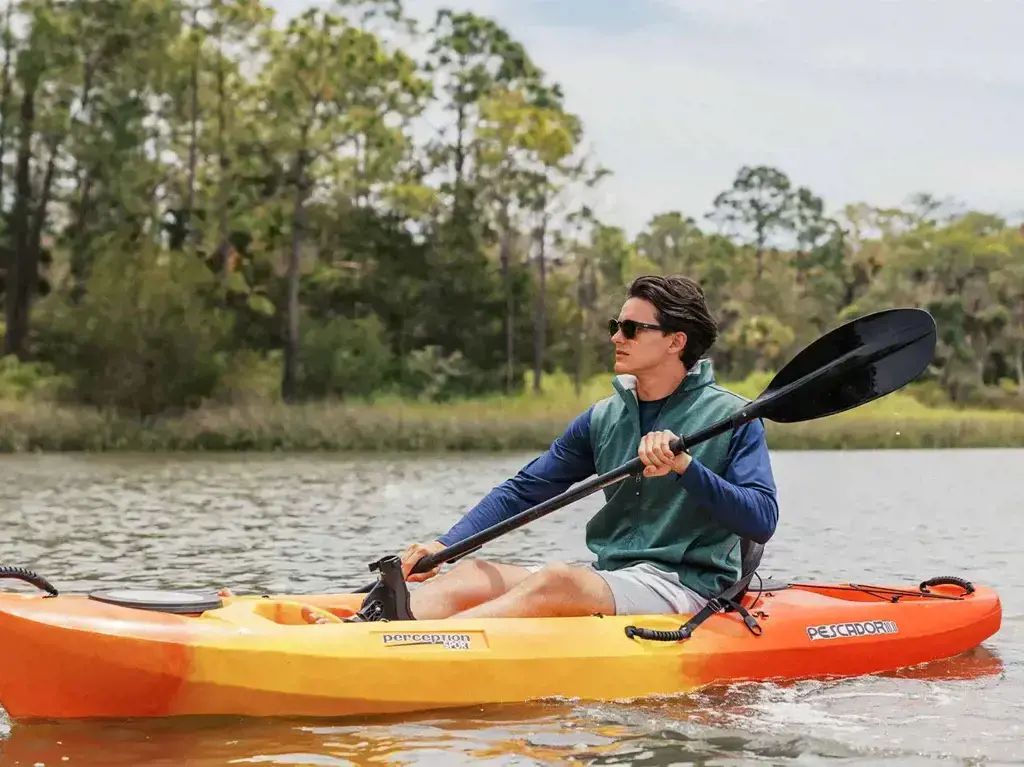
When planning a kayak camping trip, it is important to bring the appropriate clothing items to ensure comfort and safety throughout your adventure. The clothing you choose should be suitable for the environment and weather conditions you will encounter. Here are some specific clothing items you should consider bringing for a kayak camping trip:
- Waterproof and breathable clothing: As you will be spending a lot of time on the water, it is crucial to have waterproof and breathable clothing. A waterproof jacket and pants will keep you dry in case of rain or splashes from the water. Look for garments made with breathable materials to prevent you from getting too sweaty while paddling.
- Quick-drying and moisture-wicking base layers: Base layers made from synthetic materials, such as polyester or nylon, are great options for a kayak camping trip. These fabrics are quick-drying and moisture-wicking, meaning they will keep you comfortable by pulling moisture away from your skin. This will help regulate your body temperature and prevent you from feeling too hot or cold.
- Sun protection clothing: Spending long hours under the sun can be damaging to your skin, so it's important to protect yourself from harmful UV rays. Consider wearing lightweight, long-sleeved shirts and pants that offer UPF (Ultraviolet Protection Factor) to shield your skin from the sun. Don't forget to wear a wide-brimmed hat and apply sunscreen to exposed areas of skin, such as your face, neck, and hands.
- Water shoes or sturdy sandals: Since you'll be launching and landing your kayak from the water, it's essential to have appropriate footwear. Look for water shoes or sturdy sandals with a good grip to provide traction on slippery surfaces. These shoes should also be quick-drying to prevent discomfort and blisters.
- Lightweight and moisture-wicking socks: To keep your feet comfortable and prevent blisters, wear lightweight, moisture-wicking socks made from synthetic materials. Avoid cotton socks, as they tend to retain moisture and can lead to blisters and discomfort.
- Extra layers for warmth: Even if you are kayaking in warm weather, it's always a good idea to bring extra layers in case the temperature drops. Pack a fleece or lightweight insulated jacket, as well as a beanie and gloves, to keep you warm during cooler evenings or unexpected weather changes.
- Dry bag for spare clothes: Along with your clothing items, bring a dry bag to store spare clothes. This will ensure that you have dry clothes to change into at the end of the day. It is also useful in case of unexpected rain or capsizing, as it will protect your belongings from getting wet.
Remember, it's important to dress in layers so you can adjust your clothing as needed throughout the day. Additionally, always check the weather forecast and plan your clothing accordingly. By being properly dressed, you'll be able to enjoy your kayak camping trip comfortably and safely.
Essential Items to Pack for a 10-Day Adventure in Slovenia
You may want to see also

What kind of camping equipment should I bring for a kayak camping trip?
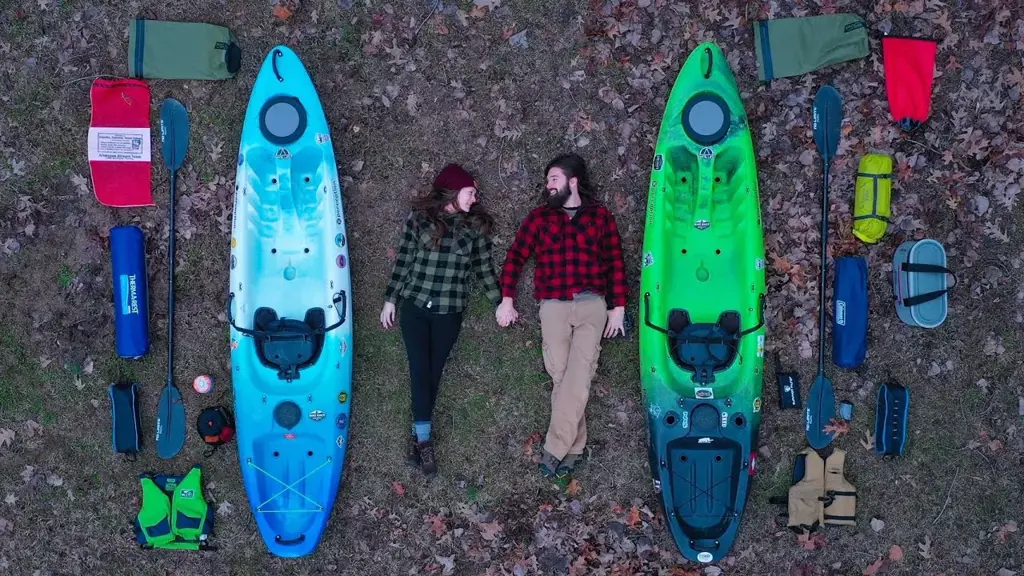
Kayak camping is an exciting adventure that combines the thrill of kayaking with the peacefulness of camping in the great outdoors. However, it requires some careful planning and preparation to ensure a safe and enjoyable trip. One of the most important aspects of kayak camping is having the right equipment. In this article, we will discuss the essential camping equipment you should bring for a kayak camping trip.
Camping Shelter:
One of the first things you'll need is a suitable camping shelter. This could be a tent, a hammock, or even a bivy sack. When choosing a camping shelter, it's important to consider the size, weight, and ease of setup. Look for a shelter that is lightweight and compact, as you'll be carrying it on your kayak.
Sleeping Gear:
Next, you'll need a comfortable sleeping bag, sleeping pad, and maybe even a pillow. The sleeping bag should be rated for the expected weather conditions during your trip. It's also a good idea to bring a sleeping pad to insulate yourself from the ground and add extra comfort. If you prefer a pillow for a good night's sleep, consider bringing an inflatable camping pillow that takes up less space in your kayak.
Cooking Equipment:
To make delicious meals while kayak camping, you'll need cooking equipment. A portable camping stove that runs on fuel can be a great investment. Make sure you bring enough fuel for the duration of your trip. Additionally, pack a lightweight pot or pan, utensils, and bowls or plates. It's also a good idea to bring some lightweight and non-perishable food items for emergencies.
Water Filtration System:
Access to clean water is crucial while camping. Instead of carrying large quantities of water, consider investing in a water filtration system. There are many portable water filters available on the market that allow you to collect and filter water from lakes, rivers, or even rainwater on the go. This will lighten your load significantly and allow you to stay hydrated throughout your trip.
Clothing and Personal Items:
Pack appropriate clothing for the expected weather conditions, as well as any personal items you may need. This may include rain gear, extra layers for colder nights, a hat, sunglasses, sunscreen, and insect repellent. Remember to pack a small and lightweight towel and toiletries for personal hygiene.
Safety Gear:
Safety should be a top priority while kayak camping. Make sure you have a properly fitted and Coast Guard-approved personal flotation device (PFD) or life jacket. Bring a sturdy and reliable kayak paddle, as well as a spare paddle in case of emergencies. Other essential safety gear includes a first aid kit, a waterproof bag for storing your belongings, and a whistle or signaling device to attract attention if needed.
Remember to research the specific regulations and requirements for the area where you plan to kayak camp. Some areas may require permits or have restrictions on campfires or waste disposal. Follow leave-no-trace principles and always practice good outdoor ethics to preserve the environment for future campers.
In conclusion, having the right camping equipment is essential for a successful kayak camping trip. Make sure you have a suitable camping shelter, sleeping gear, cooking equipment, a water filtration system, appropriate clothing, and safety gear. By being well-prepared and properly equipped, you'll be able to enjoy a memorable and enjoyable kayak camping experience.
Essential Items to Pack for a Beach House Getaway
You may want to see also

Are there any food and cooking essentials I should pack for a kayak camping trip?
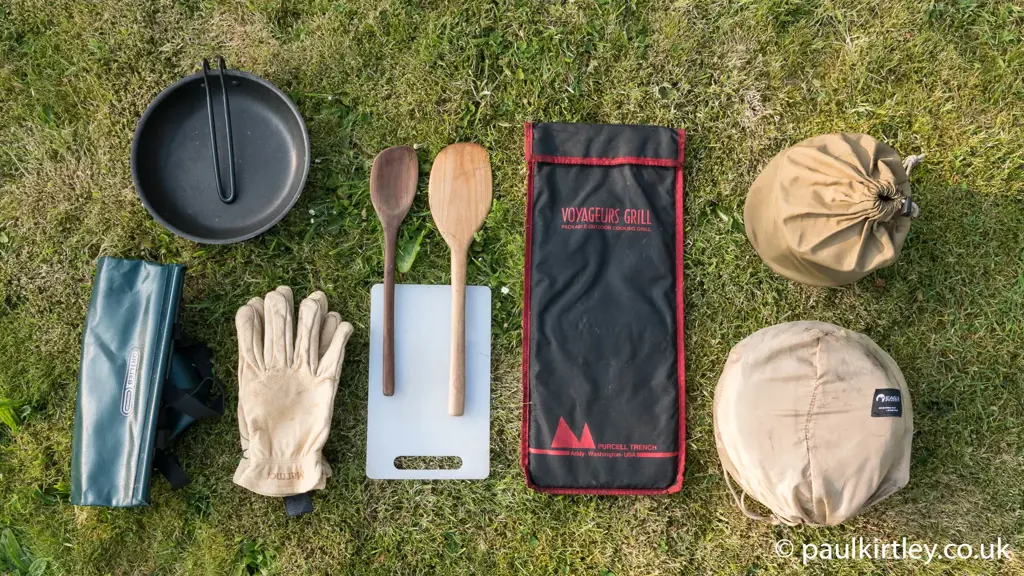
Camping trips can be a great opportunity to connect with nature and indulge in outdoor activities. Kayak camping specifically offers a unique experience, allowing you to explore serene waterways and set up camp in remote locations. While planning for a kayak camping trip, it is essential to consider the food and cooking essentials you should pack. This article will guide you through the necessary items to ensure a successful and enjoyable trip.
Lightweight and Packable Foods:
When it comes to kayak camping, it is crucial to pack foods that are lightweight and easy to carry. Opt for dehydrated meals, instant noodles, trail mixes, energy bars, and dried fruits. These food items provide necessary nutrients without taking up much space in your kayak. Additionally, they have a longer shelf life, enabling you to plan for longer trips without worrying about spoilage.
Cooking Equipment:
To cook your meals during the kayak camping trip, there are a few cooking essentials you should pack. Firstly, a portable camping stove is a must-have item. Choose a compact and lightweight stove that operates on a small fuel canister. These stoves are ideal for backpacking and kayak camping due to their efficiency and ease of use. Additionally, pack a set of lightweight cookware, such as a camping pot, pan, and utensils. It is also advisable to carry a small cutting board and a sharp knife for meal preparation.
Water Filtration System:
When kayaking and camping, access to clean drinking water is crucial. Instead of carrying cumbersome water bottles, invest in a reliable water filtration system. There are various options available, including portable water filters, water purifiers, and water treatment tablets. These systems allow you to safely consume water from lakes, rivers, and streams, ensuring hydration throughout your trip.
All-Weather Packaging:
Your food and cooking essentials should be packed in all-weather packaging to protect them from water and other elements. Use dry bags or waterproof containers to keep your food dry and secure. These containers are designed to withstand rough weather conditions and prevent any water leakage, ensuring your food remains safe and consumable.
Consider Dietary Restrictions
If you or any members of your camping group have specific dietary restrictions or allergies, it is essential to consider those when planning your meals. Ensure that the food you choose is compatible with everyone's dietary needs. There are numerous options available for vegan, gluten-free, and other specialized diets. Research and prepare accordingly to ensure everyone enjoys their meals without any health concerns.
Waste Management:
Proper waste management is crucial during kayak camping trips to preserve the natural environment. Pack reusable containers and ziplock bags to store leftover food and trash. Dispose of waste appropriately, following Leave No Trace principles. Avoid leaving any trace of your camping activities, including food scraps, to minimize your impact on the environment.
In conclusion, packing the right food and cooking essentials for a kayak camping trip is essential to ensure a memorable and enjoyable experience. Choose lightweight and packable foods, carry necessary cooking equipment, invest in a reliable water filtration system, and pack your items in all-weather packaging. Considering any dietary restrictions and practicing proper waste management will further contribute to a successful trip. With the right preparations, you can focus on exploring nature and creating lasting memories on your kayak camping adventure.
Choosing the Perfect Size for Your Back Packing Pack: A Comprehensive Guide
You may want to see also
Frequently asked questions
When packing for a kayak camping trip, it's important to bring essential items that will ensure your safety and comfort. These include a tent or hammock for sleeping, a sleeping bag with a waterproof cover, a camp stove or portable grill for cooking, plenty of water and water purification tablets, food that is easy to prepare and store, a first aid kit, insect repellent, sunscreen, extra clothes and rain gear, a waterproof dry bag or dry box to keep your belongings dry, a map and compass or GPS device, and a communication device such as a whistle or flare gun in case of emergencies. It's also a good idea to have a multi-tool or pocket knife, a headlamp or flashlight, and a repair kit for your kayak.
Yes, it's important to have the right gear for kayaking to ensure your safety and enjoyment on the water. In addition to a kayak and paddle, you should have a personal flotation device (PFD) that fits properly and is always worn while kayaking. It's also recommended to have a waterproof and buoyant kayak bilge pump to remove any water that may get inside the kayak. A spray skirt can help keep water out of the cockpit, and a paddle float can be used as a self-rescue device in case you capsize. Additionally, having a tow rope or tow belt can be useful if you need to assist or be assisted by other paddlers. It's always a good idea to check local regulations and weather conditions before heading out and to pack accordingly.
When packing for a kayak camping trip, it's important to ensure that your gear is properly secured and protected from water damage. Start by using waterproof dry bags or dry boxes to pack your clothes, food, electronics, and other items that need to stay dry. These can be strapped to the kayak using bungee cords or kayak deck rigging. Place heavier items low and towards the center of the kayak to maintain stability. It's a good idea to pack a small tarp or ground cloth to keep your gear off the ground at your campsite. Keep frequently used items easily accessible, such as sunscreen, water, and snacks, by placing them in a deck bag or flotation bag that attaches to the kayak's cockpit. It's also important to distribute weight evenly on both sides of the kayak to maintain balance and stability while paddling.







